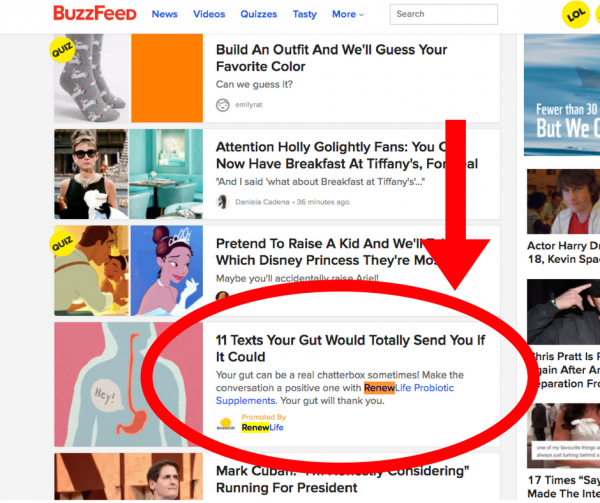B2B Myth of the Week: B2B Holiday Marketing Packs Zero Punch
by Emily Swet
The Myth: B2B Holiday Marketing Packs Zero Punch
The Truth: The Holidays Are the Perfect Time for One Last Knock Out
It seems like the moment the Jack-O-Lantern is blown out, the world becomes one big B2C holiday marketing free-for-all. But believe it or not, there is a good opportunity to get your B2B brand in front of your customers a few more times before Q4 ends. Consider this:
- Buyers often have use-it-or-loose it budgets at the end of the year. Give them a chance to spend it up.
- The holidays throw a wrench into everyone’s schedules. You may have an opportunity to get directly in front of a decision-maker that wouldn’t ordinarily happen.
- The general spirit of merriment during the holidays make customers more likely to engage, and more receptive to acts of goodwill.
Considering we’re just a few days shy of Thanksgiving, there isn’t a whole lot of time to create a campaign from scratch. Instead, let’s focus on what’s possible. Here are a few scalable to-dos between now and Dec. 31.
Re-gift Your Content
Create a relevant article, end-of-year checklist, or white paper for your consumers. If you don’t have time to create fresh content, take a look at your top performers from the year, then reuse and repurpose them. Turn the info from a blog post into an infographic. Take a high-performing newsletter and turn it into a blog post. You get the idea.
Show Gratitude
Build a stronger relationship and a positive image with the simple act of saying thanks. Extend a thank you to your customers, to your staff, and anyone else that might contribute to the success of your brand. Saying thank you to your staff via social media gives your brand life behind your logo. And sending a tailored holiday-themed “thank you” to your customers will keep you top of mind in the year to come.
Offer A Discount
A well-timed offer or incentive can help you stand out from the competition at year end. Furthermore, customers are groomed for year-end deals. Leverage that behavior: use seasonal language (think: Black Friday, Cyber Monday, A Holiday Gift From Us, etc). Discounts can be positioned as urgent, one-time deals or as a personal gift from your company to your client.
Don’t leave the season to the B2C marketers alone. Done right, your B2B holiday marketing plan can have you off to the start of a great New Year.
Continue ReadingB2B Monday Myth: The Lowest Price Always Wins
by MGB2B
The Myth: The Lowest Price Always Wins
The Truth: Business Wins Based on Price Alone Might Devalue Your Brand Over Time
When you give a prospect a proposal, it’s easy to try to win using price. And in many cases, that may just work. But if price is the only thing that differentiates your brand, that’s a problem. Let’s take a closer look at what’s more important than pricing, and how you can deal with those customers who are only looking for a bargain.
The Biggest Problem with Competing on Price
Yes, prospects love low prices. And if you are able to compete on price without sacrificing the quality of your product or service, that’s great. But guess what? Your competitors can drop their prices at any time, too. Then what do you have? Are you the highest quality brand? Do you have the best service? What differentiates you from your competitors besides price? If the answer is “nothing,” it’s time to have another look at your brand’s positioning statement. The best part? Defining who you are as a brand will help you beyond just pricing. It will inform your marketing campaigns and drive everyone in your organization toward the same goals.
Offer Tiered Pricing
Sometimes the best B2B pricing strategy is a tiered one. Potential buyers like to feel empowered, and giving them a limited menu of options is a great way to do that. It also doesn’t detract from the value of your products or services. It says, “this is what we are worth at these different levels.” The buyer can then choose which level is right for their budget. And you don’t have to devalue the brand that you’ve worked so hard to build.
It’s Okay to Lose Some Customers (Really, It’s Okay)
There are prospects out there who genuinely appreciate what you have to offer them at the prices you request. And there are those that will suck your company dry. They are not interested in the quality. Or the service. Or the cost savings over time. They don’t appreciate those things. They will try to get you to bring your price down as low as you’ll possibly go. And then, when you give in, it doesn’t stop. They’ve seen you cave, and when the next project arises, they’ll expect you to cave again. These are not people you want to do business with if you can avoid it. Of course, when times are tight, you sometimes have to make sacrifices. But this should be the exception and not the rule.
When it comes to B2B pricing strategy, the stakes are high. It’s not just about winning another customer by lowering prices. It’s about what you have the potential to lose by doing so – the value and the integrity of your brand.
Continue Reading
Marketing in Camouflage: Native Advertising for Manufacturers
by Emily Swet
Native advertising for manufacturing brands can be a mighty tool in your marketing arsenal. And with native predicted to drive 74% of ad revenue by 2021, it’s worthy of consideration. Let’s take a closer look at the basics of native advertising to see if it’s a good fit for your manufacturing brand.
First, What Is Native Advertising?
Native advertising is an ad format that looks like the editorial content around it. It’s different from content marketing, which is unpaid and lives on your website and social channels. Instead, native ads are paid placements in publications (or their online counterparts) that offer other value to your customers.
Isn’t That Just a Fancy Word for an Advertorial?
Advertorials are similar: longer-form ads written in an editorial style to evoke the same experience as a publication they are placed in. You’ve likely heard of them – they’ve been around since the 1940s (and are the precursor to today’s infomercial). Advertorials are generally much more promotional. They usually focus on the benefits of the product/service being offered and often push to sell.
In contrast, native ads usually focus on highly targeted content from which the reader can gain value. There is less emphasis on the product behind the article, and no sales pitch. Brands gain value in return by positioning themselves as thought leaders in their industry, building trust and brand affinity.
What Are the Benefits?
- They Are Appealing. Consumers view native advertising more often then banner ads.
- They Are Empowering. When done correctly, native ads give prospects the power to find solutions to their problems.
- The Leads Are Good. Because the content is relevant and highly targeted, you get more high-quality leads. This is particularly true if you are putting native ads on the sites of niche trade publications.
What Are the Drawbacks?
- Scalability. Producing native ads can be demanding. Each ad needs to look and sound like part of its environment. That means you risk authenticity or value, especially under a deadline, if you push for quantity.
- It can be perceived as deceptive. People don’t want to be tricked. There’s a delicate balance: your content must flow naturally with the publication. But you also can’t leave your reader feeling betrayed when they notice it’s sponsored. Your content should be relevant and insightful or useful in some way.
- One bad apple spoils the bunch. There are plenty of brands creating native ads that are simply too promotional. This makes some consumers leery of native ads in general. But according to Forbes, standards for native are set to increase, making it necessary for advertisers to follow rules and regulations.
What Does This Mean for Your Brand?
To conclude, native advertising can fall right in your prospect’s wheelhouse – if it’s done right. Offer something useful to your buyer from the outset, and you’ll build loyalty and name recognition. (And pull them into your sales funnel.) But like any kind of advertising, native ads require expertise, testing, and evaluation to monitor your success rates.
Continue Reading


